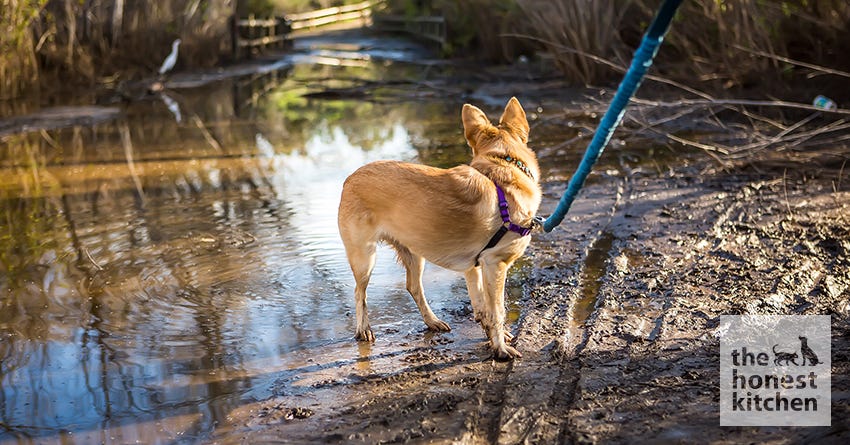What is Pythiosis in Dogs?

Did you know standing water is a breeding ground for a fungal infection that’s dangerous to canines?
Water and dogs seem to go together. While most bodies of water are safe for your dog to swim and splash in, standing water can be a water hazard. Standing water can be at risk for a serious fungal infection called pythiosis that, if left untreated, can become fatal. Protect your dog against this dangerous infection—learn the basics about pythiosis in dogs and how your canine might come in contact with it.What is Pythiosis?
A fungal infection that can affect both dogs and cats, pythiosis is caused by a type of aquatic mold called Pythium insidiosum, which is found in stagnant water. This parasite is most commonly found in swampy areas in the southeastern United States, though it has been identified as far west as the central valley in California. It’s unlikely that your dog will contract pythiosis by swimming in a pool, stream, or river, but steer clear of standing bodies of water—they’re a breeding ground for this type of fungus. In most cases, mold spores enter the dog’s body through the nose or esophagus, although it can also enter through open wounds. Once inside a dog’s body, spores settle in the lungs, brain, sinuses, skin, or gastrointestinal tract where it develops into palpable masses.Symptoms of Pythiosis
The gastrointestinal form of pythiosis is the most common pet owners will encounter. Symptoms include diarrhea, vomiting, and weight loss. Infected dogs can also develop palpable stomach masses. Less common is the subcutaneous form of the disease, which develops under the skin. Symptoms of this form of pythiosis include lesions on the head and legs as well as the area at the base of the tail. Often mistaken for granulomas or other skin growths, lesions can become itchy. If left untreated, these lesions can lead to skin and tissue death (necrosis). istockphoto/ajansen
istockphoto/ajansen